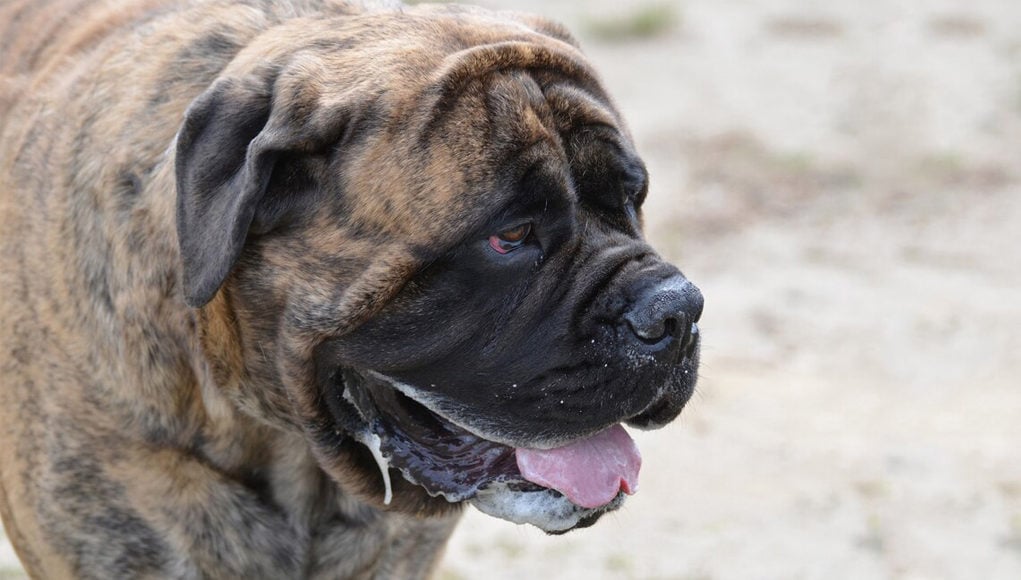Table of Contents
Is foaming at the mouth natural for dogs?
As a concerned pet parent, you may be inclined to call the vet right away if you see your dog foaming at the mouth.
But multiple things can lead to foaming, and in most cases, it is not very concerning.
Foaming at the mouth is typically associated with a severe illness, “rabies”. But it is highly unlikely that your pet has this disease.
Foaming at the mouth is more common in some breeds, but it can also indicate that your dog has swallowed something toxic.
So you need to be well aware of what causes foaming.
This article will answer the burning question, “why is my dog foaming at the mouth?”. We will discuss each factor in detail, so you should stick with us till the end!
Why Is My Dog Foaming at the Mouth? But First, Difference Between Drooling and Foaming
Before you jump to any conclusion, it is vital to understand the difference between drooling and foaming.
Foaming is not the same as drooling but is closely related to it. So, how can you tell them apart?
Drooling
Drooling is a natural phenomenon but can be more apparent in some breeds.
It is characterized by excessive saliva flow from the mouth.
You must have seen long saliva trends around your dog's mouth that are thick and watery. Drooling is common in dogs and requires no medical intervention.
Breeds such as Saint Bernard, Bloodhound, and Mastiff are considered more slobbery than others. Still, most dogs will drool when they anticipate something tasty.
You can watch this YouTube video to learn the best home remedies for excessive drooling in dogs:
Foaming
Foaming at the mouth is, in fact, a product of drooling. When the saliva in the mouth is infused with air, it gives a bubbly or frothy appearance.
The foam is white (much like a soapy bubble bath) and hangs at either side of the mouth.
Heavy breathing can cause the air inside the dog's mouth to turn saliva into foam.
Foaming can range from harmless to potentially life-threatening.
Therefore, it is better to get a complete picture of associated symptoms and behavioral changes.
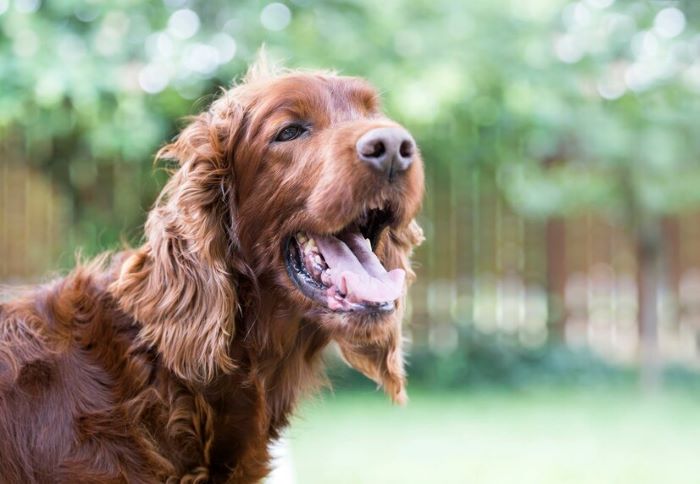
10 Causes of Dogs Foaming at the Mouth
Should you be concerned about foaming? Let's learn why your dog is foaming at the mouth.
1. Physical Exercise
Dogs drool and foam just as we sweat profusely after exercise on a hot day.
Physical activity causes hyperventilation and panting. This airflow in the mouth turns the drool into foam.
Foaming becomes inevitable with increased breathing and heart rate.
Some dog breeds are more likely to produce foam than others. These include:
- Newfoundlands
- Bernards
- Bloodhounds
- Labs
- Bulldogs
- Boxers
Foaming after play or exercise is normal, and you don't need to worry about it.
2. A Foul Taste in Mouth
Dogs are curious creatures, and they sometimes taste things they regret.
The foul taste in the mouth can irritate them, and the body works to get rid of it by producing excessive saliva.
So if your dog is foaming, try to think of anything unusual they might have eaten. Perhaps a plant, medicine, or even some soap during bath time.
If that is the case, the saliva glands immediately get into gear, causing the dog to drool. This is meant to cleanse the palate of the horrible taste.
But as discussed above, when drool is mixed with airflow, it becomes foam.
Give your dog some water or a tasty treat, and the foaming will stop.
3. Stomachache or Nausea
Nausea or stomachache can also cause foaming at the mouth.
The body tries to get rid of the food in the stomach by vomiting, and excess saliva makes this easier.
Remember how our mouth is filled with saliva when we are sick and queasy?
Similarly, saliva fills up in a dog’s mouth, and when it pants, the saliva becomes foam.
There can be multiple reasons for nausea. Dogs often feel nauseated from eating stale food.
Eating food from the garbage and a bumpy car ride can also cause nausea. This should pass in some time, and the foaming will stop.
Watch the following YouTube video to find out how you can prevent car sickness in dogs:
If the symptoms do not subside in 24 hours or your dog is often nauseous, you should consult a vet. Read our detailed blog on how to tell if your dog is sick!
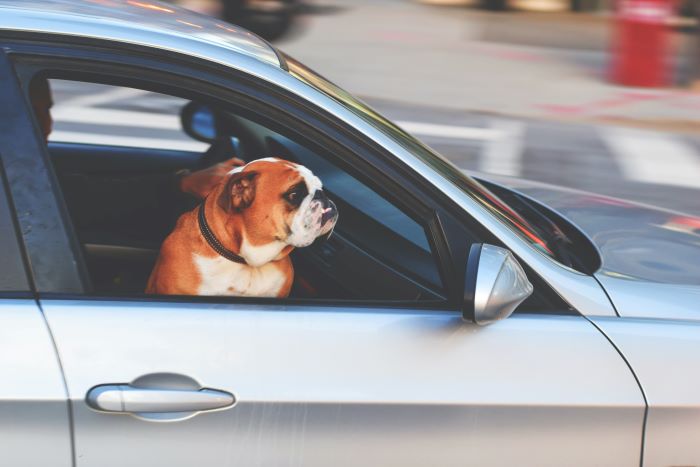
4. Stress or Anxiety
One symptom of stress and anxiety in dogs is foaming at the mouth. Fear causes various physiological reactions in all animals.
Common symptoms of canine anxiety are increased heart rate, high pulse, and increased saliva production.
This increased saliva can cause foaming at the mouth.
Various factors can stress your dog. These include:
- A noisy environment.
- Strange visitors.
- Weird smells and surroundings.
Look for additional signs to better understand if the foaming is due to stress.
Common symptoms include tensed facial muscles, wide eyes, pushed-back ears, and lip licking.
Try to learn what is causing your dog stress and take appropriate measures. The foaming should stop once the dog is calm.
5. Poor Dental Health
Dental diseases are pretty common in dogs. 80% of dogs over three years old have some form of oral disease.
So, if your pet has a dental issue, they are not alone.
Cavities, gingivitis, swollen gums, injured tongue, and other related illnesses cause mouth pain.
To avoid the pain, the dogs usually keep their mouths open and position their tongue to either side of the mouth.
Breathing with an open mouth causes excessive drool, which leads to foaming. The more the dog pants, the greater it foams.
If you suspect a dental issue, check if your dog is reluctant to eat, has bad breath, or inflamed gums.
If you notice these symptoms, visit the vet as soon as possible. It is always better to catch the issue early!
6. Heat Stroke
Heat stroke is another potential cause of mouth foaming in dogs.
In the hot weather, the body's internal temperature rises, leading to heavy panting, more saliva, and a frothy mouth. Your dog may even collapse due to heat exhaustion.
Heat strokes are more common in brachycephalic breeds. If your dog is of such a breed, you should protect them from hot weather.
It goes without saying that you should never leave your dog alone in a car.
Most dog heat strokes happen in the car, and it’s about time pet owners learn the lesson.
7. Trouble Swallowing
Difficulty swallowing can also be the reason for your dog foaming at the mouth. This issue often goes unnoticed as it is not very apparent.
Usually, a sharp object (a stick or a toy) can get lodged at the back of the throat. Since the dog is irritated, the mouth generates saliva to dislodge it.
Breathing difficulty is an indicator that your dog is choking and needs help.
Inspect the dog's mouth visually to find the object.
Removing it safely on the spot or rushing to the nearest veterinarian are the best options.
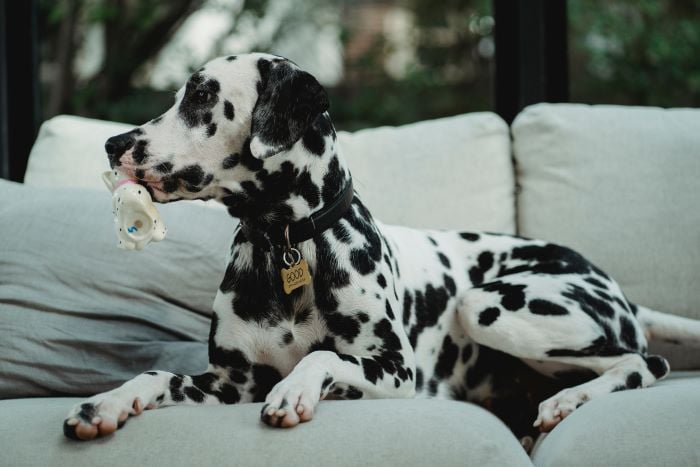
8. Toxic Substances
A concerning cause of foaming is inhalation or ingestion of toxins.
If your dog accidentally swallows something harmful, the poison can irritate the mouth and much more.
You will see a lot of foam as the body tries to combat the toxin.
Many toxins, such as insecticides, chemicals, or poisonous plants, can be hazardous for your dog.
If you think your dog may have ingested something deadly, take them for emergency treatment.
You should also call your local pet poison helpline for further assistance.
Dogs attempt to eat frogs. But some frogs are poisonous and can be lethal for your pet.
The Giant toad and the Sonoran Desert toad are deadly species found in the U.S.
If your dog’s mouth is foaming after attempting to eat a frog, rinse it and seek emergency help.
9. Neurological Illness or a Seizure
Foaming can also be a symptom of a neurological disorder or a seizure. These are quite apparent and are associated with various other signs.
A classic representation of seizures is convulsions caused by rapid brain signaling.
These uncontrolled signals go to nearly every muscle, including the salivary glands. The oral glands produce excessive drool, which turns into foam.
Heavy breathing during a seizure attack can create thick foam on both sides of the mouth.
During a seizure, dogs typically jerk, twitch, fall, or lose bladder and bowel control.
If the dog is suffering from a neurological disorder, foam can also indicate the onset of a seizure.
Conditions such as liver disease, strokes, kidney failure, and cancer can also cause seizures and foaming.
During a seizure, it is recommended that you follow these steps:
- Take the dog to an open space.
- Keep them from banging into objects and injuring themselves.
- Steer clear of the mouth until the seizure passes.
- Consult a doctor immediately for the appropriate treatment.
10. Rabies
Although rabies is the least likely cause of foaming, it is still a deadly disease.
Frothy drool is a common symptom of a rabid dog. Sadly, if your dog has contracted rabies, there is not much you can do.
Kennels and vets regularly administer rabies vaccines to protect dogs from this fatal illness.
As a responsible pet owner, you should ensure your dog is vaccinated.
You should not be concerned as it is highly unlikely that your dog is foaming due to rabies.
If you see a stray dog foaming and moving erratically, do not go near it!
The rabies virus spreads through the drool and saliva from the dog's mouth. Notify animal control immediately before the dog bites someone.
If you suspect a rabid animal has bitten your dog, seek emergency medical help.
But if symptoms have already started to appear, it may be too late.
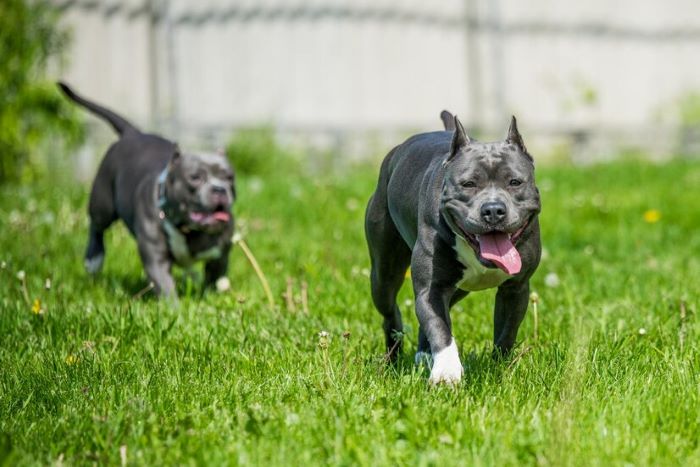
Frequently Asked Questions About Why My Dog is Foaming at the Mouth
Does foaming indicate rabies?
It can, but this is improbable.
Numerous things can lead to foaming, such as exertion, heat stroke, stress, dental issues, nausea, stomach ache, and toxin ingestion.
What should I do if my dog is foaming at the mouth?
Keep calm and assess the situation accordingly. Call your vet if you see any additional signs or abnormal behavior.
Medical professionals can diagnose your dog and provide adequate treatment.
Can I prevent my dog from foaming?
Yes, you can reduce the chances of foaming.
Ensure proper hydration, a healthy diet, timely dental care, and routine checkups at the vet.
Also, keep toxic chemicals out of your dog's reach.
Why is my dog throwing up yellow foam?
This is often due to eating too fast. But it can indicate a serious underlying condition known as Bilious vomiting syndrome.
Frequent vomiting of yellow foam is very concerning, and you should get a professional opinion.
How do I know if my dog has ingested poison?
Call the Animal poison control helpline immediately if you suspect your dog has ingested something poisonous.
They will guide you about the ingested toxin and what symptoms to look out for.
How much does treatment cost?
The cost of treatment may vary depending on the cause of foaming.
In cases of poisoning from the ingestion of plants or other toxins, the cost is approximately $1600.
The treatment of seizures can cost you up to $2500.
Dog Foaming at the Mouth: Final Words
Occasional foaming at the mouth is natural in dogs.
If you are concerned about your dog foaming at the mouth, it is essential to determine the underlying cause.
In most cases, it is not something serious and is easily fixed.
Foaming can result from various problems, including physical exercise, heat stroke, stress, dental issues, nausea, or a neurological illness.
Whatever the cause, don't panic and try to look for other symptoms and behavioral changes.
Call a vet if you suspect something is wrong. If you have further questions, you can ask us in the comments below.


